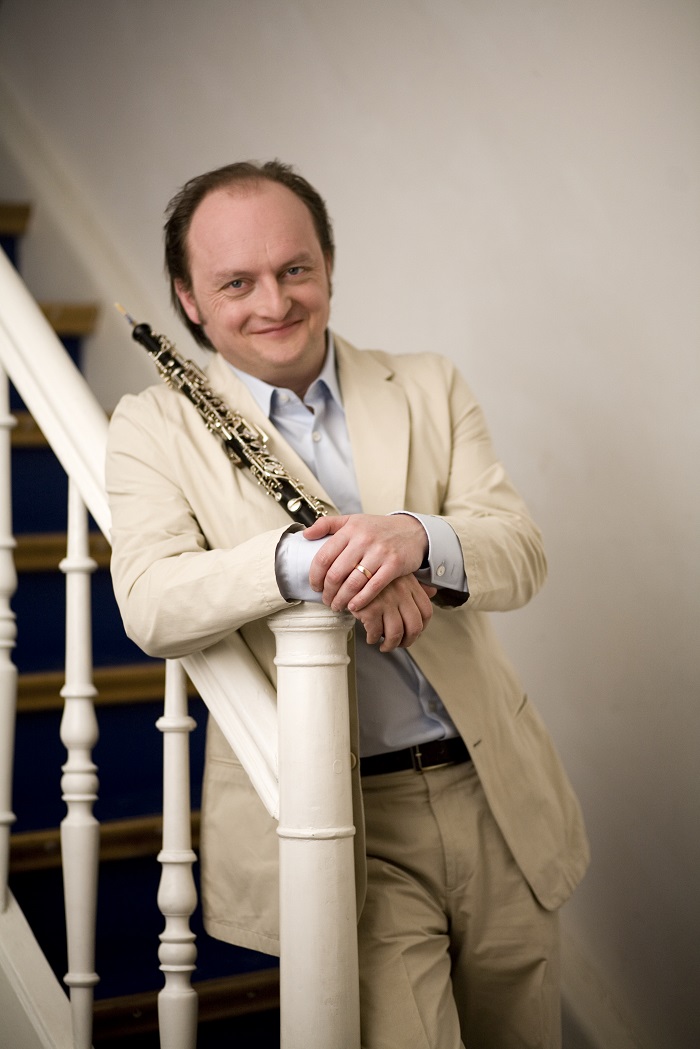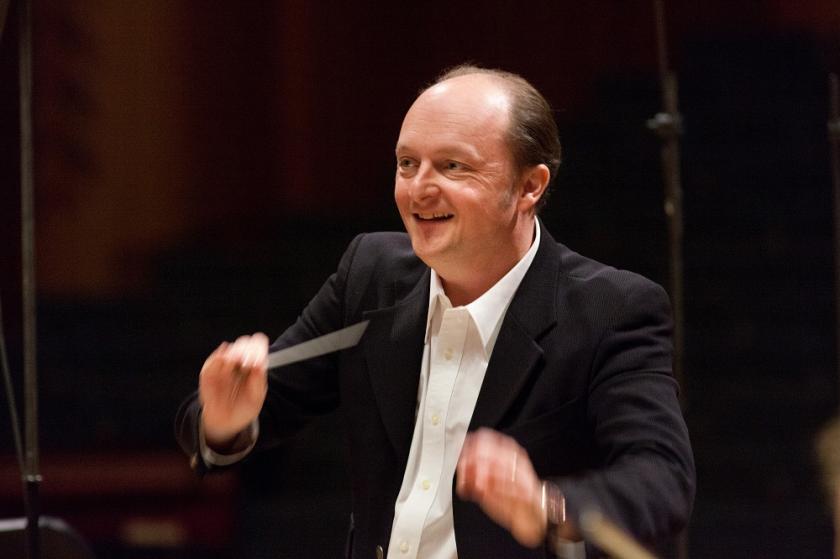There’s always a special atmosphere when the City of Birmingham Symphony Orchestra returns to Birmingham Town Hall, and it’s not just because of the building’s Greek Revival beauty: the gilded sunburst on the ceiling, or the towering, intricately painted mass of the organ, topped with its cameo of Queen Victoria. Or, for that matter, the sense of history: that you’re occupying the space where Mendelssohn, Dvořák and Elgar premiered major choral works, and where Gounod narrowly escaped assassination at the hands of a jilted mistress (advanced students of Birmingham musical history can savour the fact that she was called Georgina Weldon).
No, the main thing is that the Town Hall is small enough, and has sufficiently warm and congenial an acoustic, that even orchestral concerts take on something of a chamber music quality. The balance between woodwind and strings evens itself out, and there’s a physicality to the sound that makes it feel like they’re playing directly to you. And when the space is filled by a conductor and soloist with the outsize charisma and musicianship of the French oboist François Leleux, the effect is doubled. Or maybe trebled; either way, it’s like receiving a big, unexpected Gallic hug.
Leleux directed with nods, oboe waggles and balletic full body swervesAnd yes: Leleux served as both conductor and soloist in the boisterous C major Concerto that’s still attributed to Haydn, though nothing will persuade me that this Labrador puppy of a concerto with its cheerful, foursquare eruptions of trumpets and timpani, is Papa’s original, unretouched work. The point is that with Leleux (pictured below, with oboe, by Uwe Arens) in charge, you didn’t care. Nonchalantly clipping his oboe onto his waistband, he marched a scaled down CBSO crisply through the opening tutti before seizing his instrument and directing the rest of the concerto with a mixture of nods, oboe waggles and balletic full body swerves in the direction of the orchestra.
Leleux’s magnetism is such that the ensemble didn’t once sag or smudge. He sent moulded rococo melodies floating over the orchestra, made passagework slip across the underlying rhythm like melted butter and took aim at the audience before firing out a single, lethal top note. His sound, meanwhile, is – well, are we still allowed to talk about a distinctively French style of woodwind playing? A nasal, slightly citric edge is certainly part of the palette, but it’s just one element of a much richer tonal blend, deglazed and simmered to a succulent essence of oboe. Low notes are gamey and pungent; high notes can be as piercing as a peacock’s cry or as tenderly, sweetly soft as a clarinet.

Leleux followed the "Haydn" (schmaydn) with a transcription of Debussy’s Rapsodie for saxophone: smokey and intensely nostalgic when played on the cor anglais, seriously sensuous when Leleux switched to the oboe to lead the CBSO in a mock-Moorish dance. Amid Debussy’s languishing curves, ensemble wasn’t quite as neat, but by then it didn’t need to be. The entire orchestra was very evidently just enjoying every minute of Leleux’s ride. Then he bounded back on, silenced the audience with a smile, and like a shot from a starting pistol, launched Bizet’s Symphony in C. Once again, this wasn’t a great night to be Gounod at Birmingham Town Hall: the 17 year old Bizet’s symphony is modelled on Gounod’s First, and if you ever want to hear the difference between craftsmanship and genius, listen to the two works side by side. Bizet copies his teacher gesture for gesture, but at every turn, Bizet’s ideas are fresher, livelier, more piquant.
Leleux, understandably, seems to adore it, and with the chamber-sized CBSO by now clearly willing to follow him anywhere, it sparkled with dew. Tempi were enthusiastic; but with rhythms smart and buoyant and every texture ringing clear and bright, the effect was of athleticism rather than with effort – even in that dizzying moto perpetuo finale. Cellos dug energetically into their rustic third movement drones; each entry in the second movement’s featherweight fugue ended with a little skip and the CBSO’s oboe home team of Rainer Gibbons and Emmet Byrne shared their big solo with a suppleness and fantasy that sounded – as they surely intended – like a homage to the evening’s guest star. Leleux brought them straight to their feet as the audience cheered.
The evening had begun with lyrical, clear eyed account of Brahms’s Haydn Variations, which gave early notice of Leleux’s knack for springing a rhythm, and had the CBSO’s woodwinds moving and swaying together like an octet. It ended with Leleux and his cor anglais, and a shortened arrangement of the Largo from Dvorak’s New World Symphony which might have sounded cheesy if the playing of the whole orchestra hadn’t been so luminously expressive. Like all the best encores, it felt like a gift. Leleux introduced it as Goin’ Home. Judging by the way the orchestra beamed as they left the stage, it probably won’t be too long before Leleux is comin’ back.













